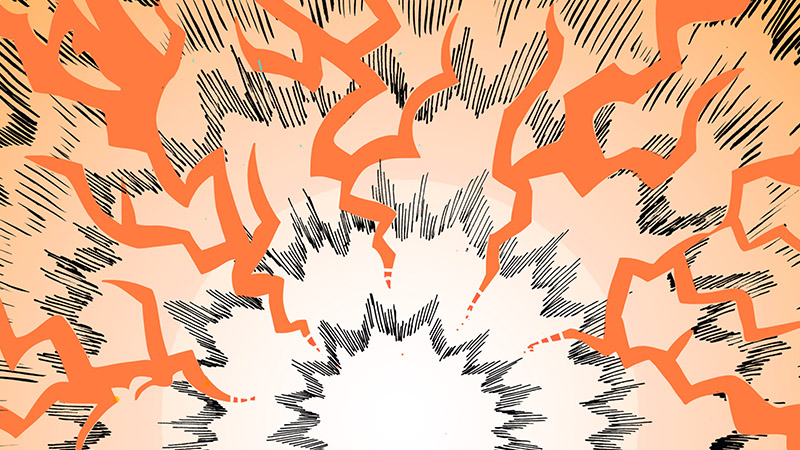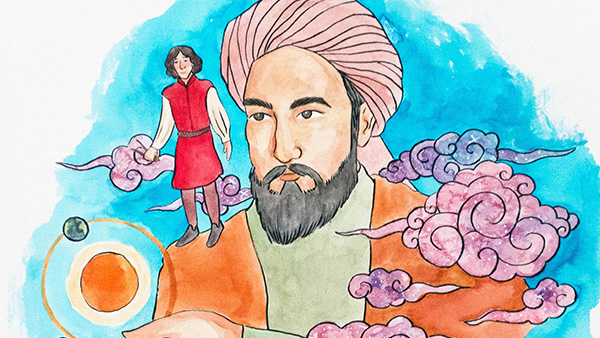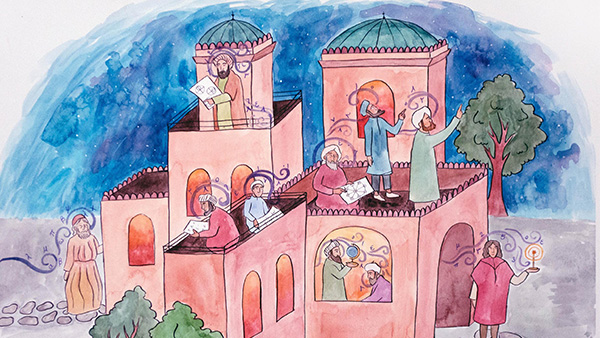Big Bang to Earth
Driving Question: How can thresholds of increasing complexity help us understand the formation of the Universe, our Solar System, and Earth?
Big History’s thresholds of increasing complexity explain how a Universe composed mainly of hydrogen and helium became one filled with billions of stars and planets.
Learning Objective:
- Explain how complexity increased from the origins of the Universe to the formation of the Earth.
Vocab Terms:
- Big Bang
- collective learning
- complexity
- Earth
- element
- solar system
- star
Opener: Big Bang to Earth
To teach this lesson step, refer to page 2 of the Lesson 2.1 Teaching Guide.
Check out the OER Project Writing Guide to learn more about our approach to informal writing.
What do you already know about the Universe, our Solar System, and Earth? Put your knowledge to the test!
Unit 2 Overview
To teach this lesson step, refer to page 3 of the Lesson 2.1 Teaching Guide.
New to reading historical comics? Check out our Graphic Biographies lesson plan to learn more about teaching using this genre.
You’re about to learn almost 10 billion years of history. Luckily, it won’t take anywhere near that long to learn how our Universe went from being really simple to really complex.
The First Four Thresholds
To teach this lesson step, refer to page 3 of the Lesson 2.1 Teaching Guide.
Looking for tips on using video in the classroom? Look no further than the OER Project Video Guide.
The Universe is like life: it starts simple, but it gets complicated fast! The next steps show you how it happened.
Closer: Big Bang to Earth
To teach this lesson step, refer to page 4 of the Lesson 2.1 Teaching Guide.
Closers are a great way to informally assess student understanding of the content. For an explanation of closers, check out this guide.
How did the Universe change during its first 10 billion years of existence? Show off your musical talents, and your new knowledge, by writing a song about the early days of the Universe.
Scientific Giants of the Islamic World
To teach this lesson step, refer to page 4 of the Lesson 2.1 Teaching Guide.
We often think of scientists as lone geniuses who had “aha!” moments and discovered the secrets of the Universe. In reality, scientific breakthroughs happen thanks to information shared across generations.
-
Guiding Questions
-
Before you read
Preview the questions below, and then skim the article. Be sure to look at the section headings and any images.
While you read
Look for answers to these questions:
- The scientist Isaac Newton said, “If I have seen further, it is by standing on the shoulders of giants.” What did he mean?
- When and where was the “golden age”?
- What are “invisible giants”?
- Who contributes to collective learning?
- Why is it difficult to write the history of collective learning?
After you read
Respond to this question: What is an example of collective learning in your life?
The Missing Link?
To teach this lesson step, refer to page 5 of the Lesson 2.1 Teaching Guide.
You would not believe how many fights there have been over whether the Sun orbits the Earth, or the Earth orbits the Sun. Learn how Muslim scholars contributed to settling the question once and for all!
-
Guiding Questions
-
Before you read
Preview the questions below, and then skim the article. Be sure to look at the section headings and any images.
While you read
Look for answers to these questions:
- What is the heliocentric model?
- What is one important contribution of a scholar who worked between the times of Ptolemy and Copernicus?
- Why was astronomy a major field in the Islamic world?
- Why was the Maragha Observatory significant?
- What are two differences between the two models of the Universe depicted in the article’s images?
After you read
Respond to this question: What evidence does the author provide to convince you that the work of scholars at the Maragha Observatory influenced Copernicus’s Sun-centered model?








